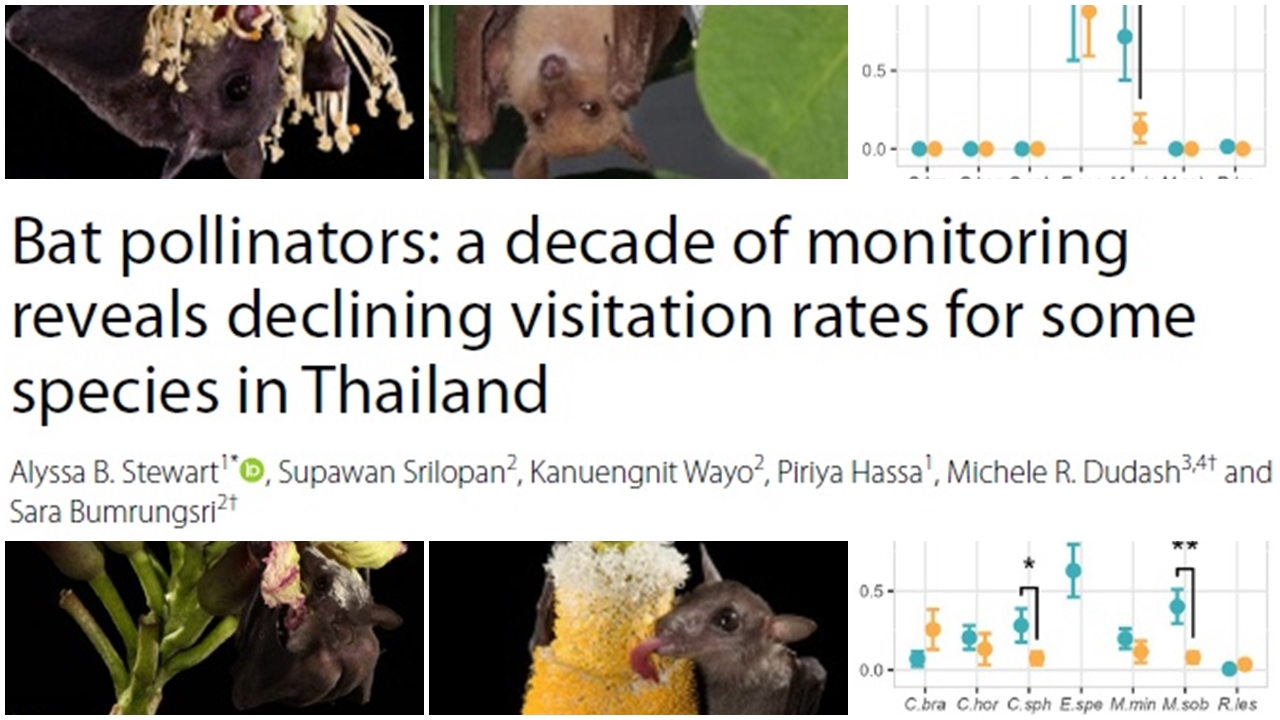Abstract
Bats are important pollinators, but they are difficult to study since they are volant and nocturnal. Thus, long-term studies of nectarivorous bats are scarce, despite their potential to help assess trends in bat populations and their pollination services. We used capture rates of nectarivorous bats at chiropterophilous flowers in order to examine temporal trends in bat visitation in an area that is undergoing extensive land use change. We mist-netted at five bat-pollinated plant taxa (Durio zibethinus, Musa acuminata, Oroxylum indicum, Parkia speciosa, and Sonneratia spp.) in southern Thailand over six years between 2011 and 2021. We found that the most common bat species, Eonycteris spelaea, was the main visitor at all five plant taxa and had consistent visitation rates across all study years. In contrast, two other important pollinators, Macroglossus minimus and M. sobrinus, showed 80% declines in the number of individuals netted at mangrove apple (Sonneratia spp.) and banana (Musa acuminata) flowers, respectively. These findings suggest that E. spelaea (a large, cave-roosting species with a broad diet) is more tolerant of anthropogenic change than are Macroglossus bats (small, foliage-roosting species with specialized diets), which may in turn affect the reproductive success of plants pollinated by these species. Our study demonstrates how decade-long monitoring can reveal species-specific temporal patterns in pollinator visitation, emphasizing the need for tailored conservation plans. While the conservation status of most nectarivorous bats in the area is Least Concern, our results indicate that population studies in Southeast Asia are urgently needed for updated bat species conservation assessments…..read more

